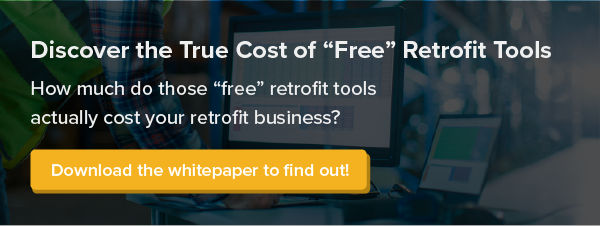
In a world as connected as ours, it’s easy to take good communication for granted. From watching your Uber approach on the app to tracking a shipment from Amazon, we’ve come to expect real-time updates on the products and services we buy.
But good communication is no accident, and there’s a reason successful companies like Uber and Amazon invest in the digital infrastructure necessary to keep their customers informed. Communicating updates with your customers builds trust, demonstrates your reliability, and helps you stand out from other contractors.
The good news is that digital tools like SnapCount provide you with an effective way to share updates without becoming overwhelmed. Here are some reasons you should consider digital communication for sharing lighting project status updates with your customers.
Precision Methods Build Trust with Your Customers During Lighting Audits and Projects
For you, lighting projects are practically second nature: You’re an expert on the steps involved, the potential hazards you’ll need to avoid, and how a minor surprise or delay can affect other parts of the project.
Your customers are much less experienced. Even if a lighting project is humming along perfectly according to plan, without good communication and regular updates, you may be surprised by how far customer expectations have drifted from what the contract actually specifies. Regular project updates shared digitally are an effective way to demonstrate that you’re executing the project to spec.
Even updates that seem small to you will go a long way toward building trust with your customers. By providing full visibility in near real time, your customer will see first-hand how the project is progressing and can ask questions along the way.
Of course, things won’t always run according to plan. When there are project delays or unexpected developments, that should be communicated right away. It’s better for the customer to get regular updates, even about these setbacks, instead of giving them all the “bad news” at once.
Ultimately, the “why” of good communication boils down to building trust with your customer. But what about the “how?”
How Retrofitters Can Use Digital Tools for Communication
Digital tools like SnapCount are a great way to manage your projects. But what you may not realize is that these same digital tools also enable better communication. By providing summary and detailed visibility across all client locations, the same software that helps you manage your projects can also provide transparency and clarity to your customers as those projects progress.
For these reasons, digital communication tools are a great option for you and your customers alike.
Why Digital Communication Is Good for Your Customers
An ideal workflow should include digital records of your project’s progress throughout the entire lifecycle. This provides your client with full visibility, and reduces the risk that the project will go over their budget. If there are variances, digital communication helps your customer understand the reasons why so they can be quickly mitigated and avoided in the future.
Proper communications also help to minimize the disruption to your customers’ normal course of business. It demonstrates that you value their time and that you’re considerate of their operations. All this helps to further cement the relationships you’re building with customers.
How You’ll Benefit from Using Digital Communications
Retrofitters also benefit from digital communication tools. One of the biggest advantages is that digital records and communications help reduce the chances for errors. When you track a project digitally from start to finish, you don’t need to manually re-enter information or translate it from one format into the next. That saves you from making even small mistakes that could wind up confusing your customer.
They also protect you if your project takes an unexpected turn. Because your customer is receiving regular incremental updates, those small hiccups can be processed one at a time. Customers will appreciate your transparency, and they’ll be more understanding of any unplanned but necessary changes. When it’s time to bill for the project, you won’t have to worry about push back from the customer. They’ll have seen your regular updates, and will have confidence that your numbers are right.
How SnapCount Supports Digital Status Updates
SnapCount is specifically designed for managing lighting projects, and the software allows you to run projects digitally from the very first step to the final, as-built deliverable. This means that every stage of the project is securely and accurately recorded in a digital format which can be easily shared with your customer.
SnapCount is also equipped to give you multiple ways to communicate. You can use the software to email reports directly to the customer, and you can even create a special login so that your customers can see the current progress of a project as their schedule permits.
These features are one more example of how SnapCount helps you streamline your processes and improve the way that you work. By enabling easy digital communication, SnapCount keeps your customers happy and supports the success of your projects.






Share this post: